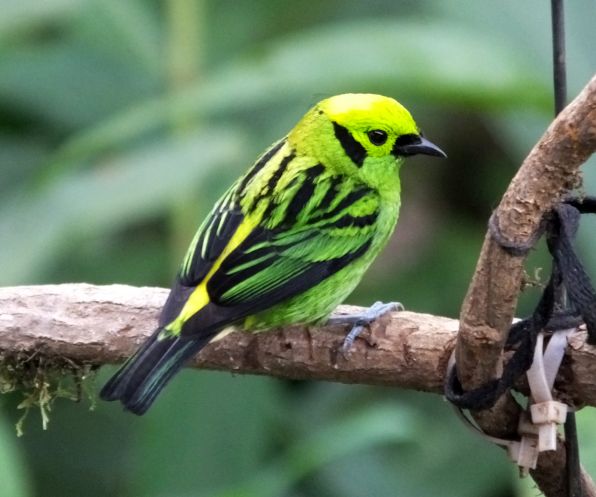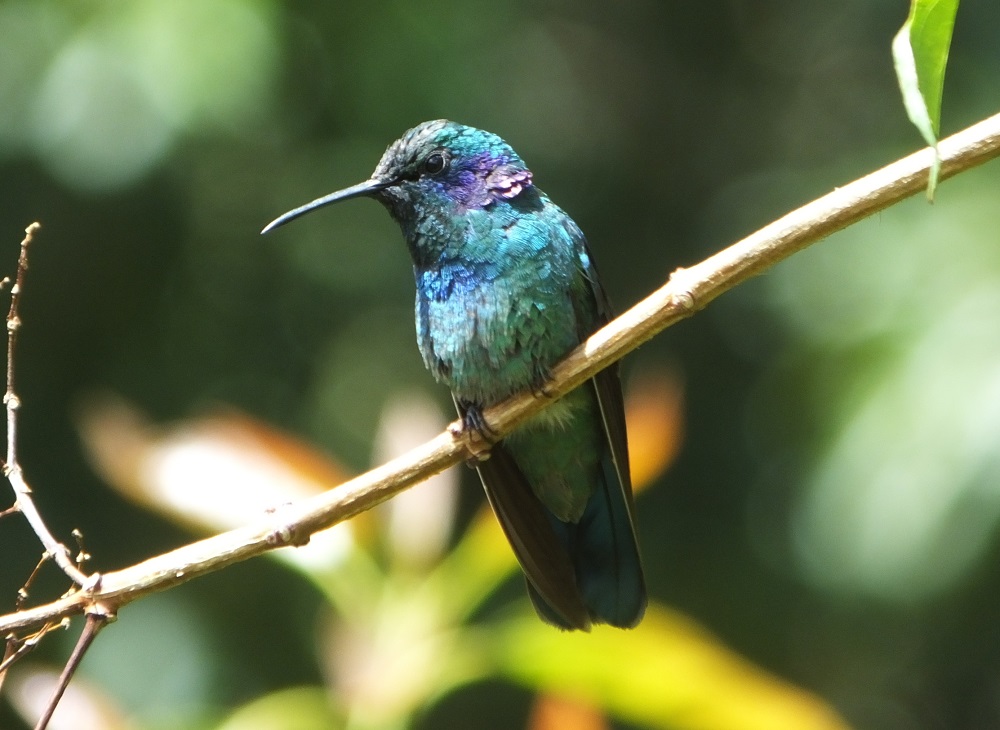Where’s the best birding in Costa Rica? The answer can be elusive; it depends on the observer, what you want to see and how you want to experience Costa Rica birds.

Even so, by merit of outstanding habitat or propensity to facilitate seeing lots of cool birds (aren’t they all?), some places stand out . One such place has been making the local birding news for the past few months. It isn’t new and the birds I am about to mention have always been there but because the site is not on the regular birding circuit, it has been very much overlooked.
That place is the San Luis Adventure Park and if you can fit it into your birding trip to Costa Rica, by all means do it. San Luis was started some 15 years ago by four local guys who wanted to start a tourism business in beautiful surroundings. They picked a site with cloud forests located between the city of San Ramon and the tourism hotspot of Fortuna. To make a long story short, this ended up being the perfect choice both for their business venture and for local wildlife. Their business has been successful, and on account of being aware of the importance of protecting biodiveristy and fostering a conservation mindset, the birding in the cloud forests of San Luis is as accessible as it is fantastic.
Some reasons why you might want to include the San Luis Adventure Park on your next trip to Costa Rica:
High Quality Middle Elevation Forest

The better the forest, the better the birding. Another way of saying that is that the more mature and extensive the forest, the more diverse and healthy it is. Mature tropical forest composed of massive trees provides the array of microhabitats and food sources necessary to sustain the full complement of bird species that have evolved to live in such habitats. For the birder visiting San Luis Canopy, this translates to chances at seeing large and speciose mixed flocks, Collared Trogon, Purplish-backed Quail-Dove, Dull-mantled Antbird, and many others (including Sunbittern along the river).

Access
San Luis isn’t the only site with high quality forest but it’s one of the few places where such habitat is easily accessible. Located on the main route that links San Ramon to Fortuna, it only takes a bit more than an hour to drive there from the airport, or an hour and 30 or 40 minutes from Fortuna. This also makes it easily accessible by public bus.
Some birding is possible from the parking area but the best birding is along the trail. This is a well maintained trail with some areas of steps and several bridges that allow views into the forest canopy. It starts at a deck that often has tanagers coming in to fruit and shortly after, accesses a hummingbird viewing area. Folks with mobility issues won’t be able to do the trail but they can still see quite a few tanagers and other birds from the viewing deck and even from the parking area.

Photos of Tanagers
Speaking of tanagers, this is one of the best sites to get close looks and shots of Emerald, Bay-headed, and Speckled Tanagers.

Tawny-capped Euphonia is also regular and when nearby trees have fruit, the viewing deck can also be good for Black-and-Yellow and Blue-and-Gold Tanagers! Both of these special species are also regular on the forest trail.
Hummingbirds
The hummingbird viewing area can host Brown Violetear, Green-crowned Brilliant, Violet Sabrewing , Crowned Woodnymph, and other species. Once in a while, Snowcap occurs and Green Hermit, Green Thorntail, White-bellied Mountain-Gem, and Coppery-headed Emerald are regular.

Rufous-vented Ground-Cuckoo
Whoah! Yes, one of the mega of mega tough birds to see can be encountered at San Luis Canopy! Not every day but often enough to be worth mentioning. Recently, two were seen by many visiting birders as they foraged at an antswarm. Although they didn’t show for Mary and I yesterday (no antswarms were present), I’m sure they will be seen again.
The chances of seeing a ground-cuckoo at San Luis are boosted by local guides who keep an eye out for them on the trails and relay that information back to the front desk. In fact, before we entered the trail, one of the co-owners, Nelson, was very helpful in providing us with information about the latest sightings and told us that if we wanted, we could also wait at the tanager viewing area until their guides could tell us if they were seeing the cuckoos.
Bare-necked Umbrellabird
Whoah! Yes, another major mega occurs at San Luis! Although one or two might be present year round, this very special bird seems to be much more likely and quite reliable from November to January. It can occasionally show near the parking area but is far more likely on the trail. Once again, the local guides let the front desk know where they have been seeing them.
Raptors
As is typical of sites with extensive, quality forest, San Luis can also be very good for rainforest raptors. Over the years, I have seen such species as Barred Forest-Falcon, Bicolored Hawk, White Hawk, Double-toothed Kite, Barred Hawk, Short-tailed Hawk, and Black and Ornate Hawk-Eagles. This can be an especially good site for the latter fancy raptor, mostly on sunny days when it calls during soaring flight.

Given its easy access, the San Luis Adventure Park makes for an excellent day trip from the Central Valley, or as a great way to start or end a birding trip to Costa Rica, especially for birders traveling to and from Fortuna. As a bonus, this excellent site is also near other very good areas for birding including Finca Luna Nueva, the Pocosol Station, cloud forests near San Ramon, and Lands in Love. I hope you visit this special place someday, until then, happy birding from Costa Rica.
To support this blog and prepare for your birding trip to Costa Rica, get “How to See, Find, and Identify Birds in Costa Rica” – a 700 plus page ebook that acts as a site guide and birding companion for Costa Rica.






















































































































